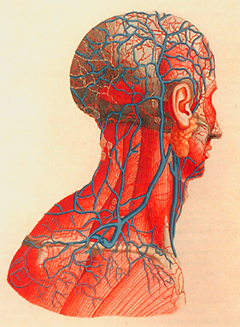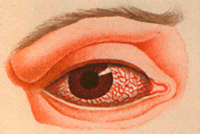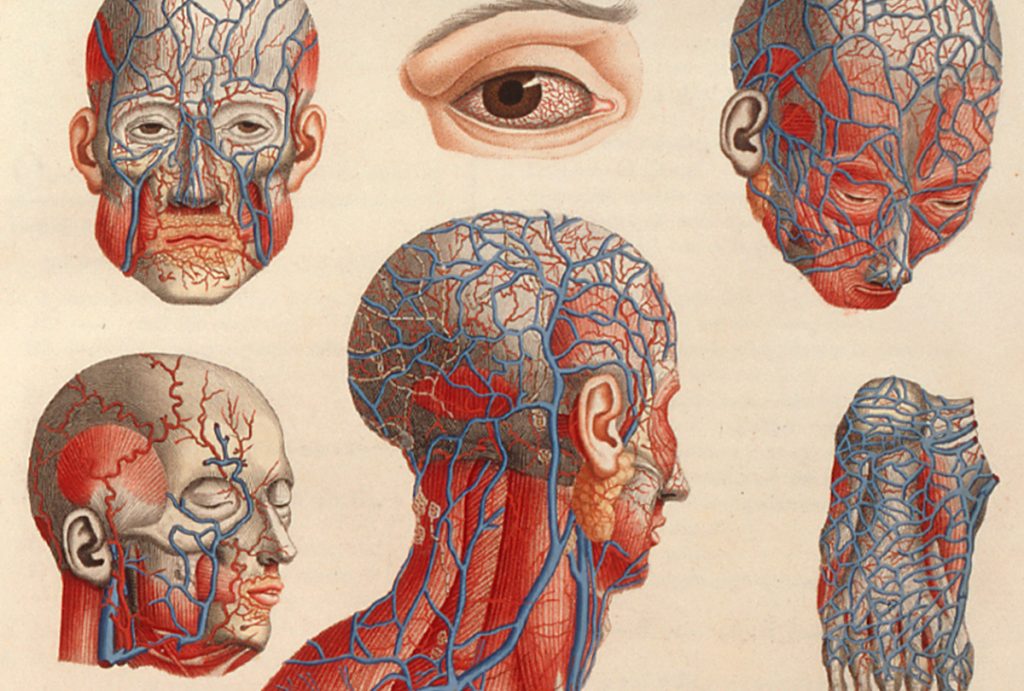People lying in bed ill are lucky because they have the opportunity to do nothing but contemplate stress and pain. Their minds don’t need to take up anything else, don’t need to go anywhere else. They have the opportunity to contemplate pain at all times—and let go of pain at all times.
To contemplate inconstancy, stress, and not-selfness [in Buddhism, the three marks of existence—anicca, dukkha, and anatta—more commonly known as impermanence, suffering, and no-self] as they appear right to you while you’re lying here ill, is very beneficial. Just don’t think that you’re what’s hurting. Simply see the natural phenomena of physical and mental events as they arise and pass away. They’re not you. They’re not really yours. You don’t have any real control over them.
Look at them! Exactly where do you have control over them? Whatever disease there is in your body isn’t important. What’s important is the disease in the mind. Normally we don’t pay much attention to the fact that we have diseases in our minds—the diseases of defilement, craving, and attachment. We often pay attention only to our physical diseases, afraid of all the horrible things that can happen to the body. The medicines you have to treat the body can give you only temporary respite. Even people in the past who didn’t suffer from major diseases are no longer with us. Everyone has to part from their bodies in the end. When you continually contemplate in this way, you see the truth of inconstancy, stress, and not-selfness correctly within you, and you’ll grow more and more disenchanted with things, step by step.
You have to examine your pain very carefully to see that it’s not really you that’s hurting. The disease isn’t your disease. It’s a disease of the body, a disease of physical form. Physical form and mental events have to change; you must focus on them as they appear to you, watch them, and contemplate them in their most elemental components. A clear insight into the nature of physical forms and mental events will release you from all suffering and stress.

Some people, when they’re healthy and complacent, die suddenly and unexpectedly without knowing what’s happening to them. Their minds are completely oblivious to what’s going on. This is much worse than it is for the person lying ill in bed who has pain to contemplate as a means of developing disenchantment and non-attachment. You don’t have to be afraid of pain. If it’s going to be there, you can let it be there—but don’t let the mind be in pain with it.
So when you’re ill, consider yourself lucky. Lying here, dealing with the disease, you have the opportunity to practice insight meditation with every moment. It doesn’t matter whether you’re here in the hospital or at home. Don’t let there be any real sense in the mind that you’re in the hospital or at home. You don’t have to label yourself as being anywhere at all. Just take the opportunity to watch phenomena arise and pass away.
You can’t go preventing pleasure and pain, you can’t keep the mind from labeling things and forming thoughts, but you can put these things to a new use. If the mind labels a pain, saying, “I hurt,” you have to examine the label carefully, contemplate it until you see that it’s wrong: the pain isn’t really yours. It’s simply a sensation that arises and passes away, that’s all.
Investigate whatever arises—a sensation, an emotion, a thought – and let it pass without clinging or attachment. Start by exercising restraint over the mind, focusing your attention and contemplating the phenomena of stress and pain. Keep this up until the mind can maintain its stance in the clear emptiness of the heart. If you can do this fully, the final disbanding of suffering will occur right there, right where the mind is empty.
Keep your awareness of the pain right at the level where it’s no more than a mere sensation in the body. It can be the body’s pain, but need not be the mind’s. First protect the mind, let things go, and then turn inward to look for the deepest, innermost part of your awareness and stay right there. You don’t have to get involved with the pains outside. They may simply be too much for you to endure. Look for the aspect of the mind that lies deep within, and you’ll be able to put everything else aside.
If the pains are the sort you can watch, then make an effort to watch them. The mind will stay at its normal neutrality, calm with its own inner emptiness, watching the pain as it changes and passes away. If the pain is too extreme, turn around and go back inside, for if you can’t handle the pain, craving is going to work its way into the picture, wanting to push the pain away and to gain pleasure. This will keep piling on, piling on, putting the mind in a horrible turmoil. If the pain is sudden and sharp, immediately turn around and focus all your attention on the mind. You don’t want to have anything to do with the body and its pains. Focus on staying with the innermost part of your awareness. Get to the point where you can see the pure state of mind that isn’t in pain with the body, and keep that state constantly clear. Once the mind is constantly clear, then no matter how much pain there is in the body, it’s simply an affair of mental and physical events. The mind, though, isn’t involved. It puts all these things aside. It lets go.
You have to keep practicing this way continually. Whenever pain arises, regardless of whether it’s strong or not, don’t label it or give it any meaning. Even if pleasure arises, don’t label it as your pleasure. Just keep letting it go, and the mind will gain release – empty of all clinging or attachment to “selfness” with each and every moment. You have to apply all your mindfulness and energy to this at all times. You should see yourself as fortunate that you’re lying here ill, contemplating pain, for you have the opportunity to develop the Path to Awakening in full measure, gaining insight and letting things go. Nobody has a better opportunity than what you have right now. A person lying ill in bed has the opportunity to develop insight with every in-and-out breath. It’s a sign that you haven’t wasted your birth as a human being, you know, because you’re practicing the teachings of the Buddha to the point where you gain clear knowledge into the true nature of things.
People in general tend to reflect on the fleeting nature of life with reference to other people, when someone else grows sick or dies, but they rarely reflect on the fleeting nature of their own lives. Or else they reflect for just a moment and then forget all about it, getting completely involved in their other preoccupations. They don’t bring these truths inward and reflect on the inconstancy occurring within themselves with every moment. Insight meditation is not something that you take a month or two off to do on a special retreat. That’s not the real thing. It’s no match for what you’re doing right now, examining your pains all day every day and all night, except when you sleep. When the pain is strong, it’s especially good for your meditation because it gives you the chance to know once and for all what inconstancy is like, what stress and suffering are like, what your inability to control things is like.

Insight meditation is not something you wait to do when you die or are just about to die. It’s something you simply keep on doing, keep on “insighting.” When the disease lessens, you “insight” it. When it grows heavy, you “insight” it. If you keep on developing insight like this, the mind will get over its stupidity and delusion. In other words, things like craving and defilement won’t dare hassle the mind the way they used to.
When the mind gets disenchanted with things, the next step is to contemplate the mind skillfully to see how it’s empty, all the way to the point where there’s no concocting of thoughts, no arising, no passing away, no changing at all.
So focus in and contemplate at the right spot, right at the mind, right at consciousness itself, and let there just be the knowing that lets go of knowing. What this means is that you let go to the point where consciousness has no label for itself. There will be no sense of good or bad or anything at all. Dualities will no longer have an effect. But because this lies a little deep, you have to make sure that your awareness is shrewd and skillful. Make sure that this skillful awareness keeps going continuously. You’ll see that when you don’t latch on to labels and meanings, thoughts of good and bad will just come to a stop.
So when the Buddha tells us to see the world as empty, this is the way we see. The dharma is right here in our body and mind, it’s simply that we don’t see it—or we see it wrongly. If we look at things with the eyesight of mindfulness and discernment, what is there to make us suffer? Why is there any need to fear pain and death? If we understand that the latching on is what makes us suffer, then all we have to do is let go and we’ll see how there’s release from suffering right before our very eyes.
⧫
From A Good Dose of Dhamma for Meditators When They Are Ill. Translated from the Thai by Thanissaro Bhikkhu, © 1995 by the Khao Suan Luang Dhamma Community. This teaching is available in its entirety on www.accesstoinsight.org.
Thank you for subscribing to Tricycle! As a nonprofit, we depend on readers like you to keep Buddhist teachings and practices widely available.
